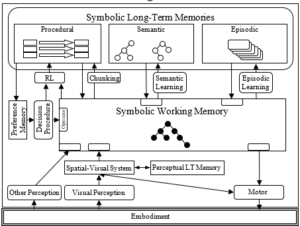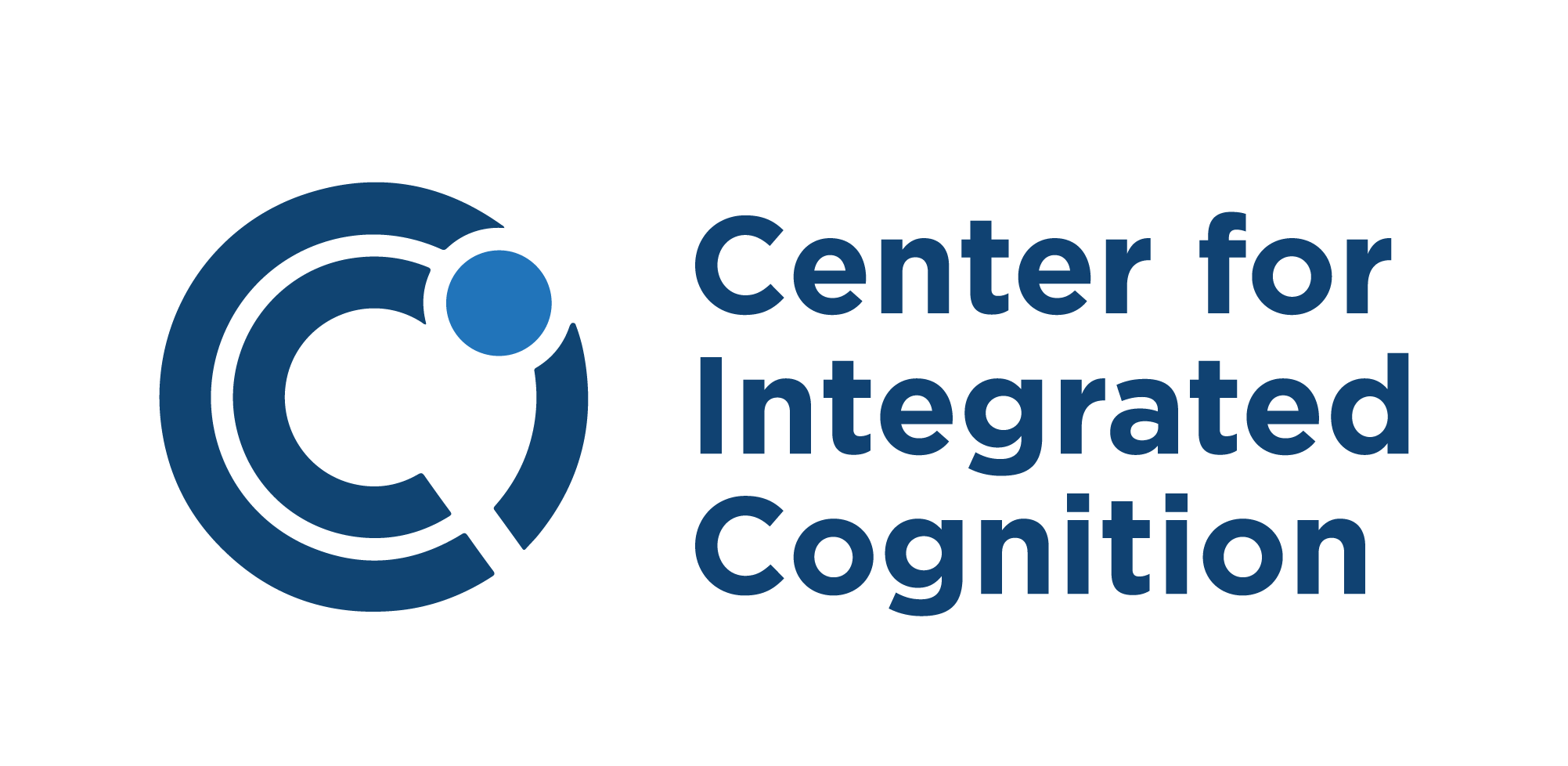Cognitive Architecture
Our approach to integrated cognition starts with cognitive architecture, which provides the fixed computational building blocks for encoding, storing, and accessing knowledge; decision making; learning; perception; and motor control. A cognitive architecture is not a single algorithm or method for solving a specific problem; rather, it is task-independent computational infrastructure, being a software realization of a general theory of intelligence.
Over the last 40 years, we have been developing the Soar cognitive architecture, which includes multiple representations of knowledge (symbolic, spatial/visual), multiple long-term memories (procedural, semantic, episodic), and multiple learning mechanisms (chunking, reinforcement learning, and episodic learning).
A wide range of agents has been developed in Soar, including agents embodied in real-world robots, computer games, and large-scale distributed simulation environments. These agents incorporate combinations of real-time decision-making, planning, natural language understanding, metacognition, theory of mind, mental imagery, and multiple forms of learning. Soar’s focus has mainly been on AI agents, but it has been used for detailed modeling of human behavior.
Soar is open source and freely available from https://soar.eecs.umich.edu/

